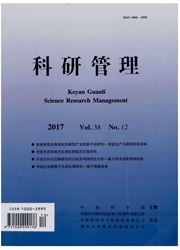

 中文摘要:
中文摘要:
本文从全局最优角度建立了省区低碳经济增长优化模型,找到了在全国能耗强度和碳排放强度约束下各省经济增长最优路径,预测了各省碳排放、能源消耗与经济增长之间的脱钩状态。结果表明,若2010—2015年各省能耗强度与碳排放强度均能够实现政府制定的降低目标,将会阻碍山西、宁夏、内蒙古和贵州的经济增长,但能促进其他省区的经济增长;提高北京、河北、上海、浙江和广东的经济增长有利于带动山西、内蒙古和贵州的经济发展,但会提高部分省区的能源结构碳强度;全国能耗强度和碳排放强度的最优降幅分别为18.19%和19.56%。除海南或青海的碳排放、能源消耗与经济增长之间均处于增长连接状态外,其他省区均处于弱脱钩状态,说明在经济增长最优路径上各省节能减排效果明显;各省碳排放增速均小于能源消耗增速。说明各省能源结构将逐渐优化。
 英文摘要:
英文摘要:
An optimal model of provincial lower - carbon economic growth is established based on the global optimal angle. Un-der the constraint of energy intensity and carbon emissions intensity of China, the optimal path for provincial lower - carbon eco-nomic growth is found. The deeoupling relationship between carbon emissions and economic growth of each province is predicted, and the decoupling relationship between energy consumption and economic growth of each province is also predicted. If each pro-vineial government is able to achieve the target of energy intensity and carbon dioxide emissions intensity during the period of 2010- 2015, the economic growth rate of Shanxi, Ningxia, Inner Mongolia, and Guizhou would be impeded, however the eco- nomic growth rate of other provinces in China would be promoted. Increasing economic growth rate of Beijing, Hebei, Shanghai, Zhejiang, and Guangdong is benefit to drive economic development of Shanxi, Inner Mongolia, and Guizhou. But the energy - carbon intensity of several provinces would be increased. From 2010 to 2015, the energy intensity and carbon emissions intensity of the whole nation would be reduced about 18.19% and 19.56%, respectively. Excerpt the carbon emissions, energy consump- tion, and economic growth for the provinces of Hainan and Qinghai all in the status of growth connection, rest of the provinces are all in the condition of weak decoupling. The results show that the effect of energy conservation and emission reduction is remarka-ble on the optimal economic growth path. The growth rate of carbon emissions is slower than the growth rate of energy consump- tion in each province. It means that energy resource structure of each province is gradually optimizing.
 同期刊论文项目
同期刊论文项目
 同项目期刊论文
同项目期刊论文
 Macroeconomic effects of oil price shocks in China: An empirical study based on Hilbert–Huang transf
Macroeconomic effects of oil price shocks in China: An empirical study based on Hilbert–Huang transf 期刊信息
期刊信息
